Abstract
Plant tissues often contain β-glucosides that can be enzymatically hydrolyzed to produce toxic aglycones. It has been suggested that the low β-glucosidase activity found in Erwinia amylovora contributes to bacterial virulence by allowing the bacteria to infect plants that contain β-glucosides without inducing the formation of toxic aglycones. To test this suggestion, we created strains of E. amylovora which had high β-glucosidase activities and studied the ability of these strains to cause fire blight disease in pears (Pyrus communis). We isolated spontaneous mutants that were able to utilize β-glucosides as the sole carbon source and showed that one class had about 10 times as much β-glucosidase activity as the wild-type strain. In addition, we constructed several plasmids that carry the Escherichia coli bgl operon under the control of a transposon Tn5 promoter that is expressed in E. amylovora. These plasmids were introduced in E. amylovora by transformation. Pathogenesis studies in immature Bartlett pear fruits, etiolated sprouts, and young shoots showed that a 100-fold increase in β-glucosidase activity does not interfere with normal development of fire blight disease in these model systems.
Full text
PDF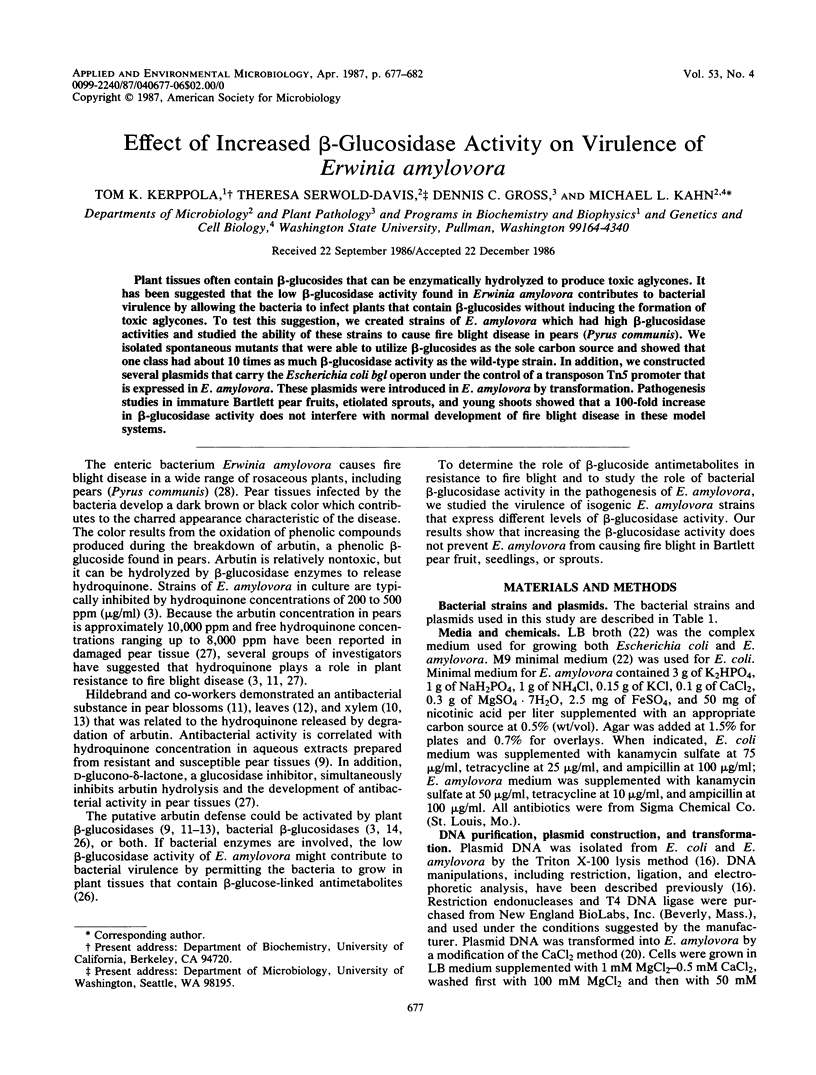
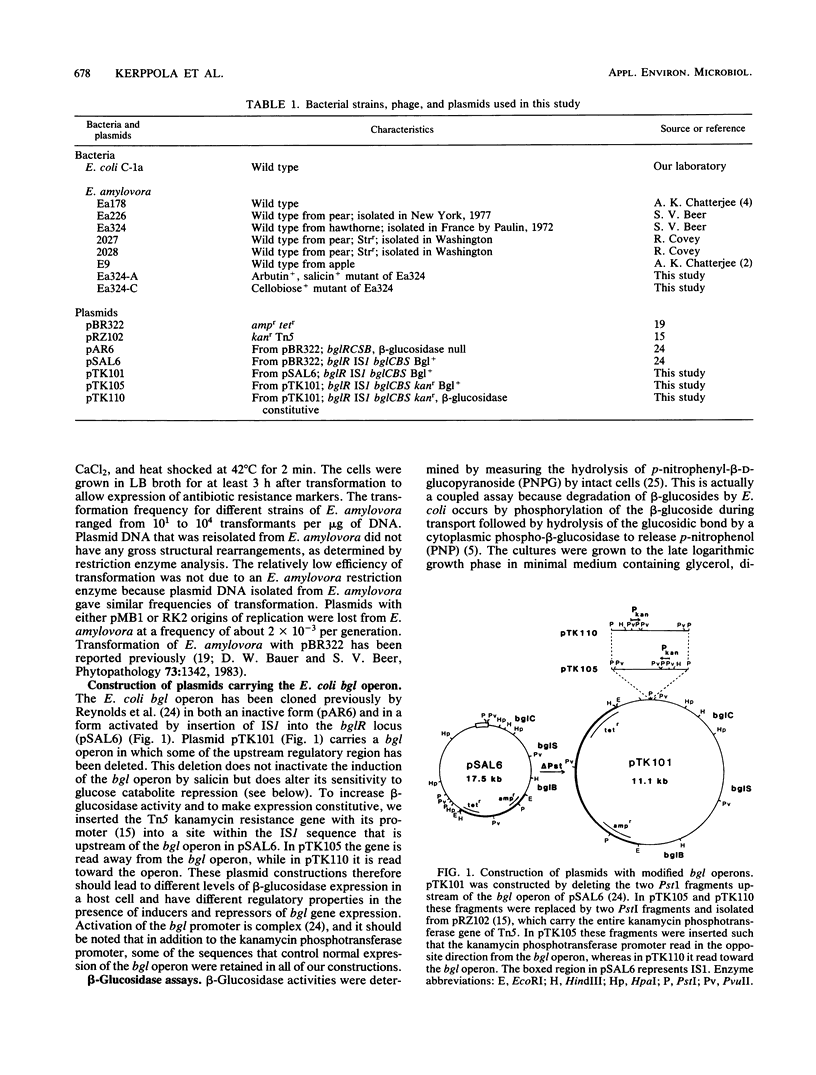

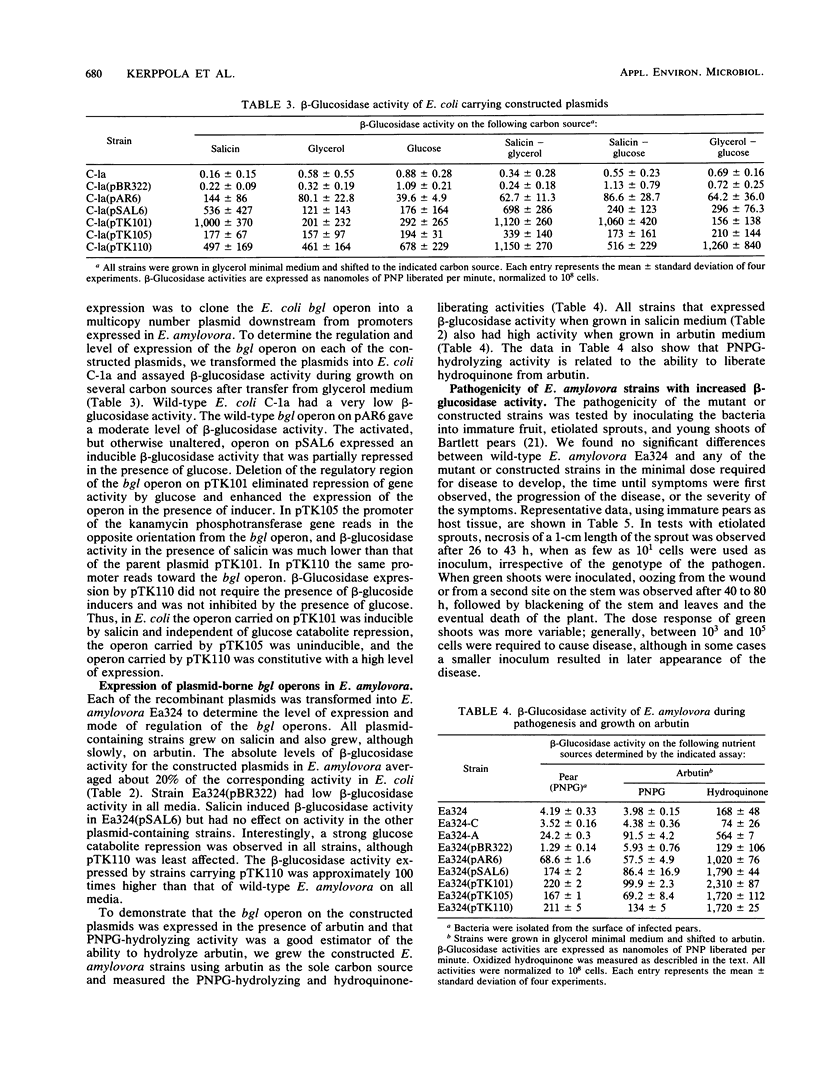
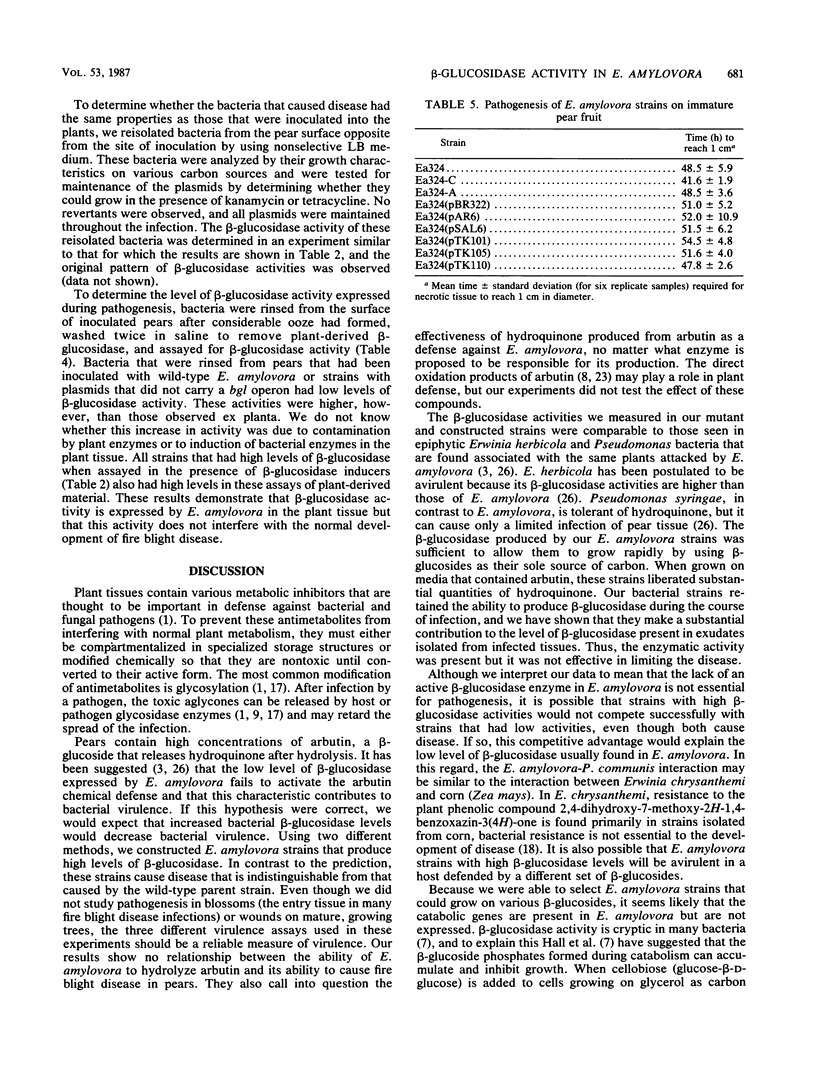
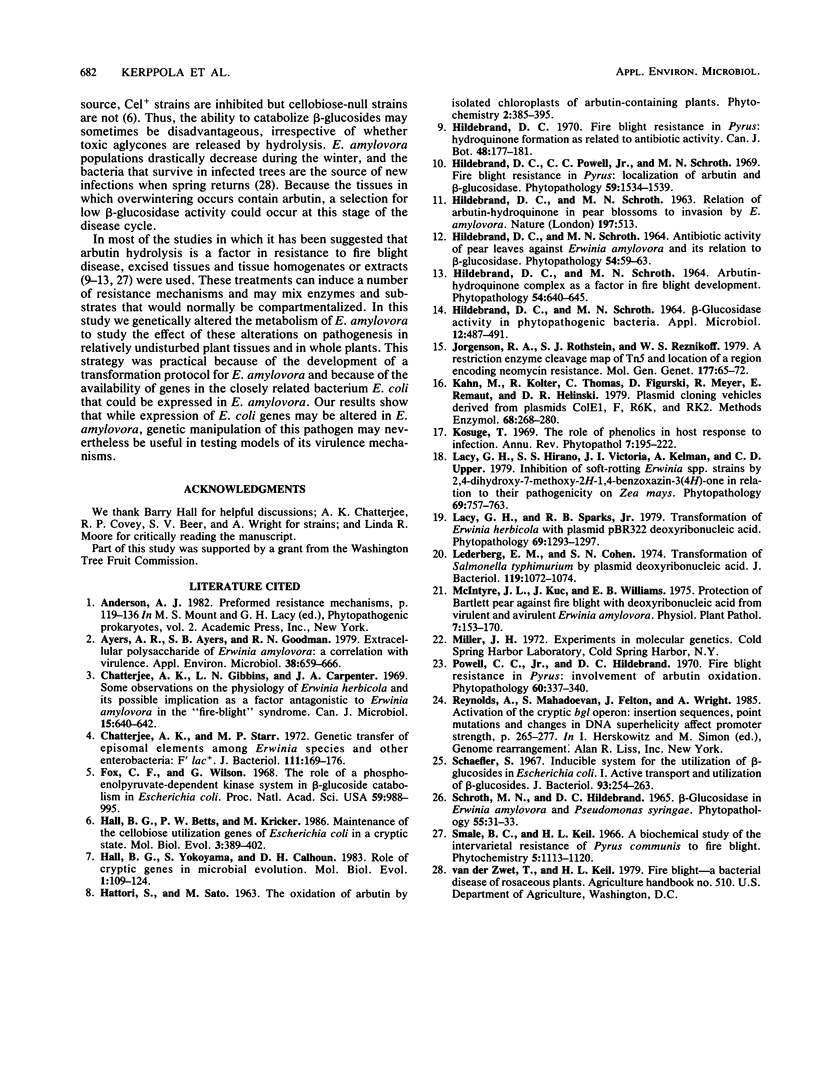
Selected References
These references are in PubMed. This may not be the complete list of references from this article.
- Ayers A. R., Ayers S. B., Goodman R. N. Extracellular Polysaccharide of Erwinia amylovora: a Correlation with Virulence. Appl Environ Microbiol. 1979 Oct;38(4):659–666. doi: 10.1128/aem.38.4.659-666.1979. [DOI] [PMC free article] [PubMed] [Google Scholar]
- Chatterjee A. K., Gibbins L. N., Carpenter J. A. Some observations on the physiology of Erwinia herbicola and its possible implication as a factor antagonistic to Erwinia amylovora in the "fire-blight" syndrome. Can J Microbiol. 1969 Jun;15(6):640–642. [PubMed] [Google Scholar]
- Chatterjee A. K., Starr M. P. Genetic transfer of episomic elements among Erwinia species and other enterobacteria: F'Lac+. J Bacteriol. 1972 Jul;111(1):169–176. doi: 10.1128/jb.111.1.169-176.1972. [DOI] [PMC free article] [PubMed] [Google Scholar]
- Fox C. F., Wilson G. The role of a phosphoenolpyruvate-dependent kinase system in beta-glucoside catabolism in Escherichia coli. Proc Natl Acad Sci U S A. 1968 Mar;59(3):988–995. doi: 10.1073/pnas.59.3.988. [DOI] [PMC free article] [PubMed] [Google Scholar]
- Hall B. G., Betts P. W., Kricker M. Maintenance of the cellobiose utilization genes of Escherichia coli in a cryptic state. Mol Biol Evol. 1986 Sep;3(5):389–402. doi: 10.1093/oxfordjournals.molbev.a040406. [DOI] [PubMed] [Google Scholar]
- Hall B. G., Yokoyama S., Calhoun D. H. Role of cryptic genes in microbial evolution. Mol Biol Evol. 1983 Dec;1(1):109–124. doi: 10.1093/oxfordjournals.molbev.a040300. [DOI] [PubMed] [Google Scholar]
- Hildebrand D. C., Powell C. C., Jr, Schroth M. N. Fire blight resistance in Pyrus: localization of arbutin and beta-glucosidase. Phytopathology. 1969 Oct;59(10):1534–1539. [PubMed] [Google Scholar]
- Hildebrand D. C., Schroth M. N. beta-Glucosidase Activity in Phytopathogenic Bacteria. Appl Microbiol. 1964 Nov;12(6):487–491. doi: 10.1128/am.12.6.487-491.1964. [DOI] [PMC free article] [PubMed] [Google Scholar]
- Jorgensen R. A., Rothstein S. J., Reznikoff W. S. A restriction enzyme cleavage map of Tn5 and location of a region encoding neomycin resistance. Mol Gen Genet. 1979;177(1):65–72. doi: 10.1007/BF00267254. [DOI] [PubMed] [Google Scholar]
- Kahn M., Kolter R., Thomas C., Figurski D., Meyer R., Remaut E., Helinski D. R. Plasmid cloning vehicles derived from plasmids ColE1, F, R6K, and RK2. Methods Enzymol. 1979;68:268–280. doi: 10.1016/0076-6879(79)68019-9. [DOI] [PubMed] [Google Scholar]
- Lederberg E. M., Cohen S. N. Transformation of Salmonella typhimurium by plasmid deoxyribonucleic acid. J Bacteriol. 1974 Sep;119(3):1072–1074. doi: 10.1128/jb.119.3.1072-1074.1974. [DOI] [PMC free article] [PubMed] [Google Scholar]
- Schaefler S. Inducible system for the utilization of beta-glucosides in Escherichia coli. I. Active transport and utilization of beta-glucosides. J Bacteriol. 1967 Jan;93(1):254–263. doi: 10.1128/jb.93.1.254-263.1967. [DOI] [PMC free article] [PubMed] [Google Scholar]


